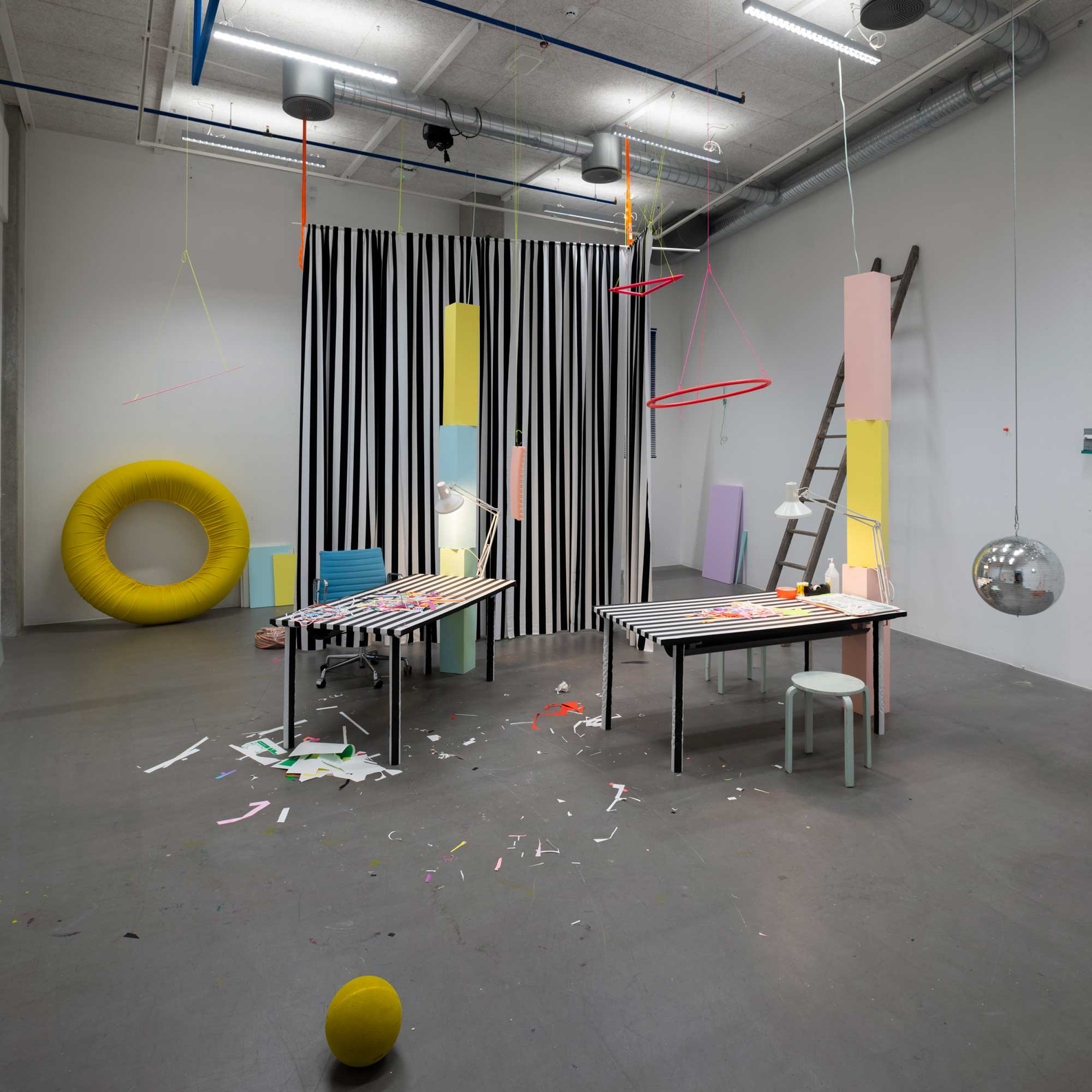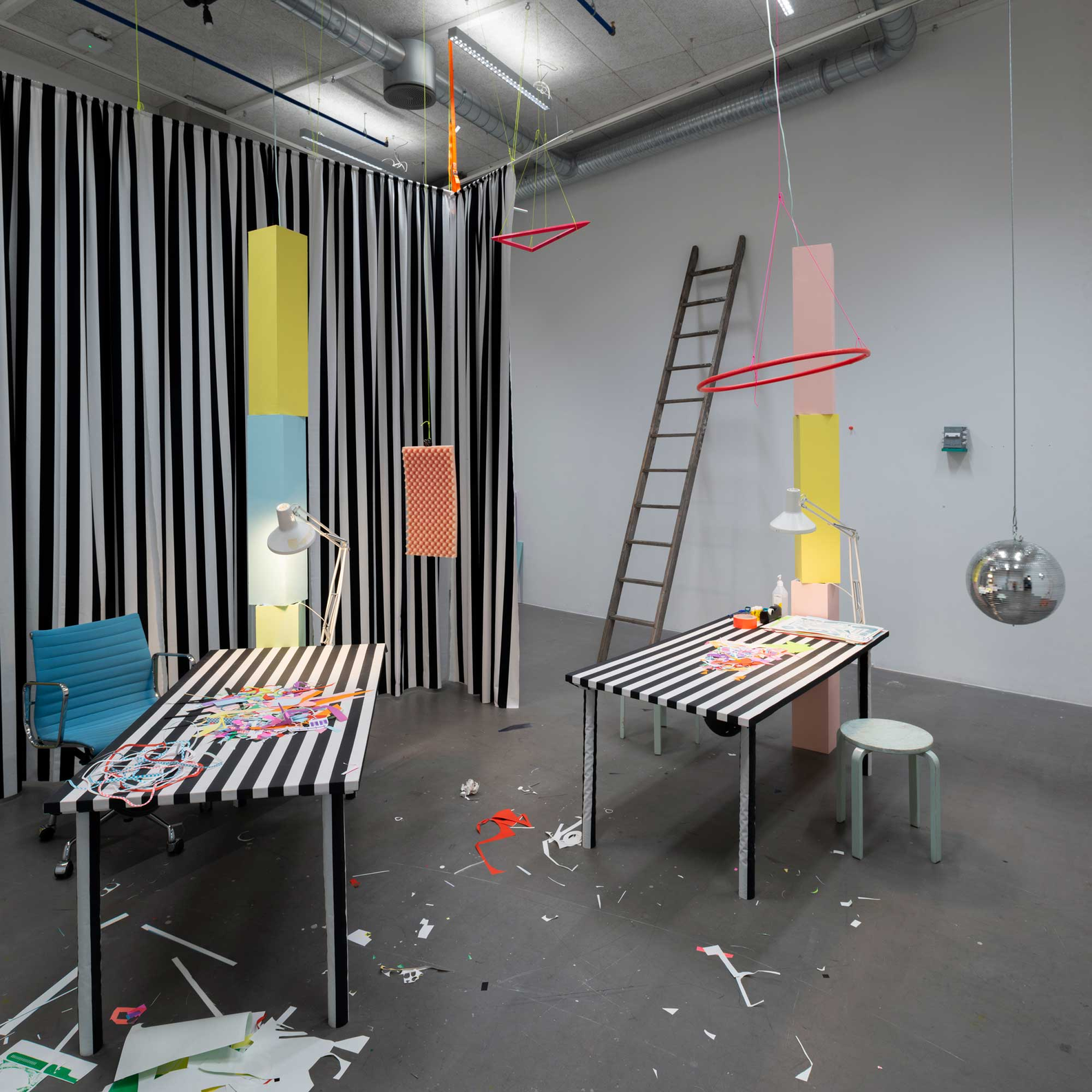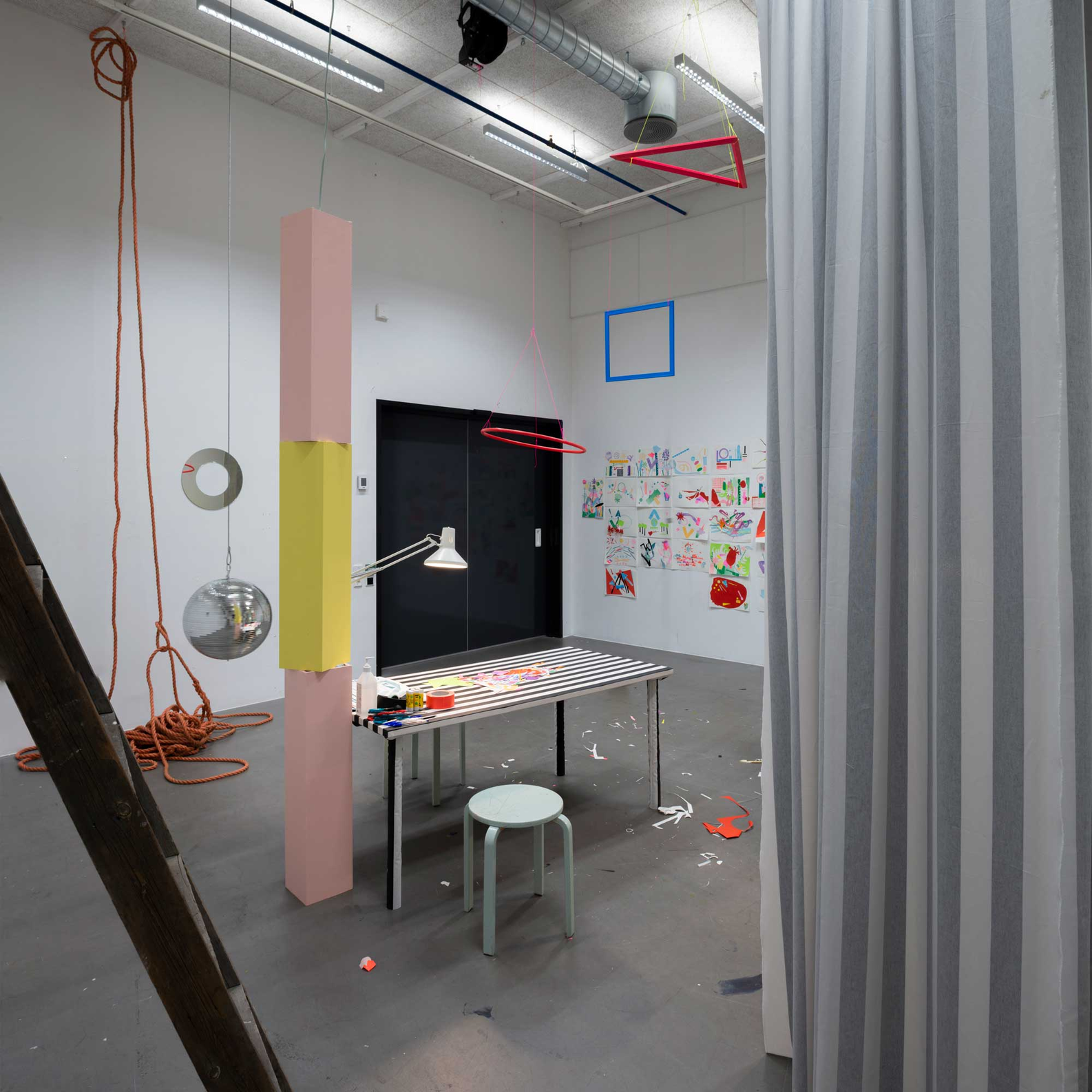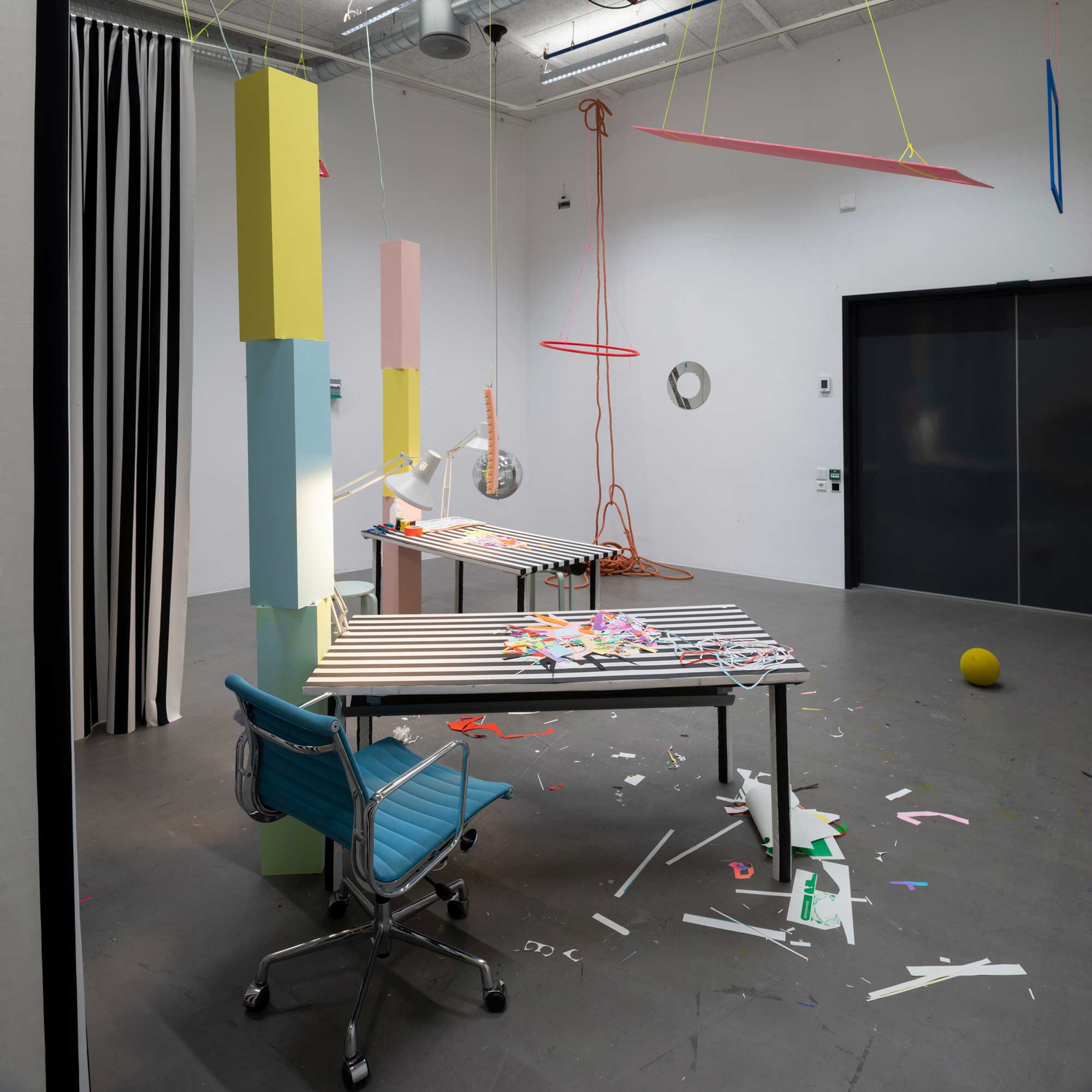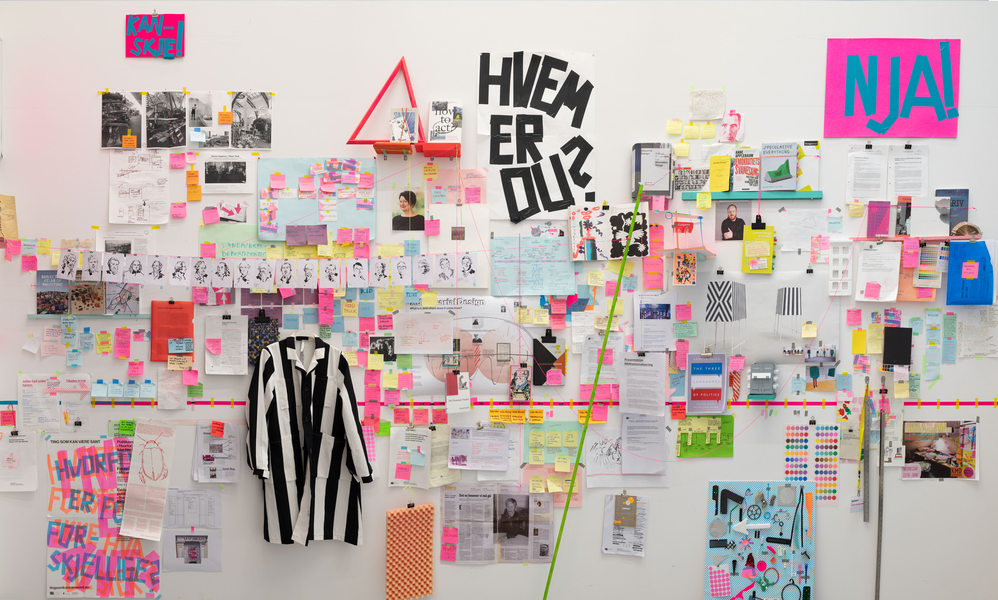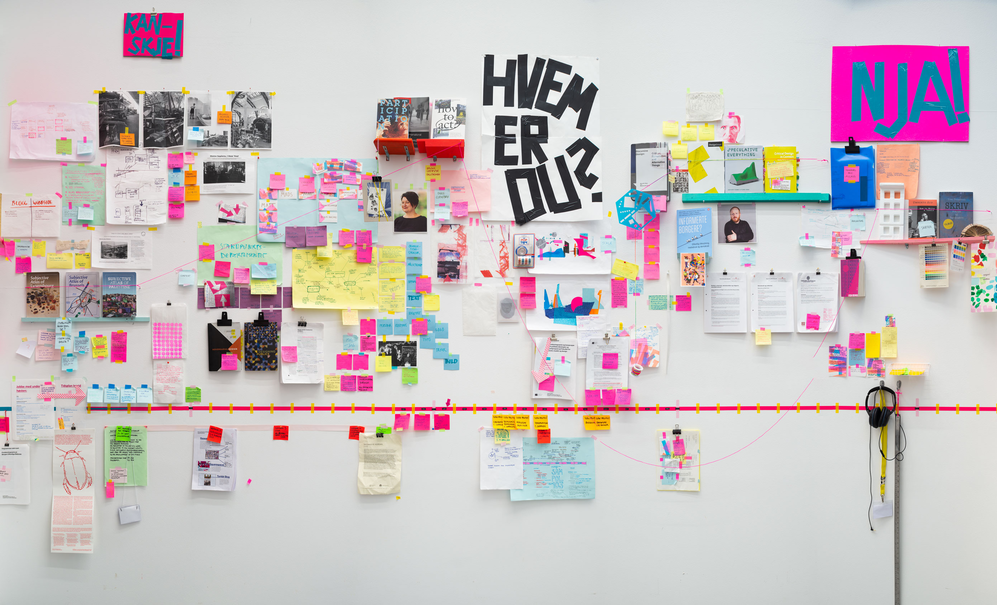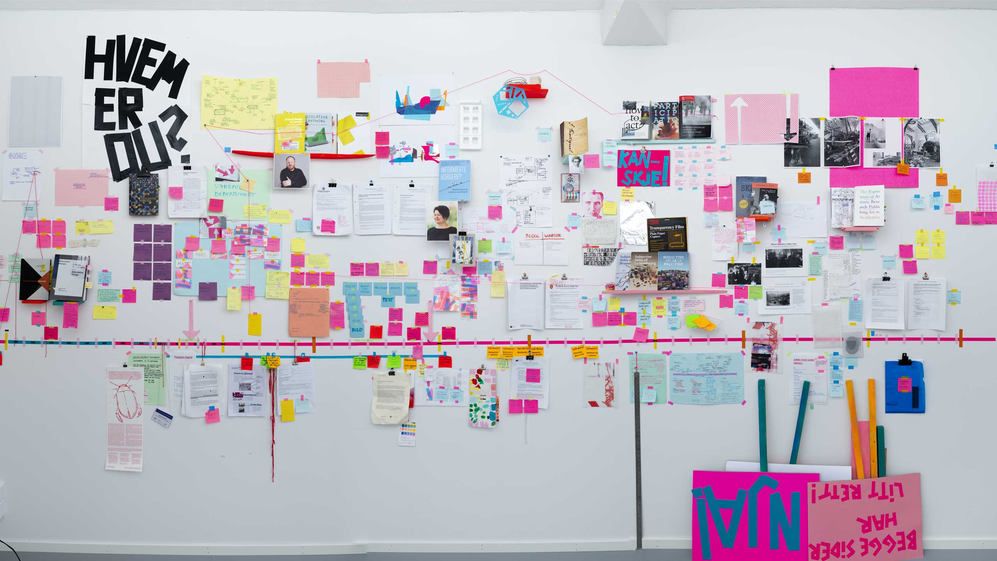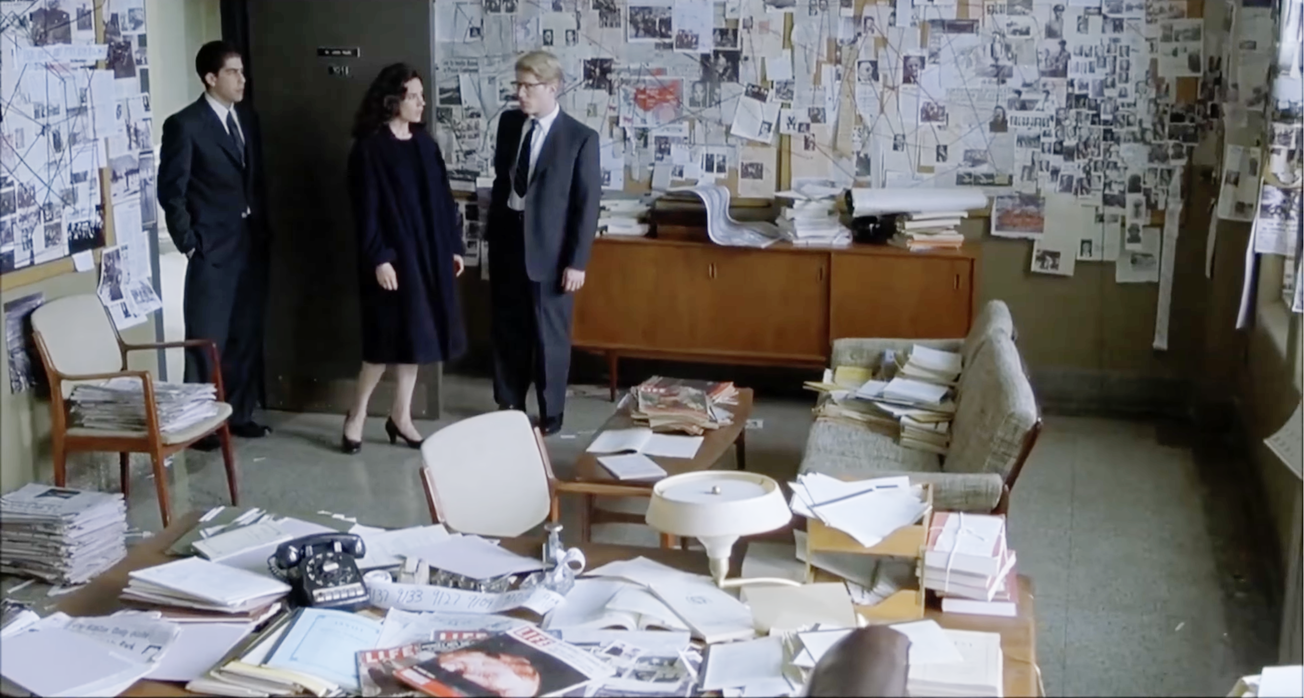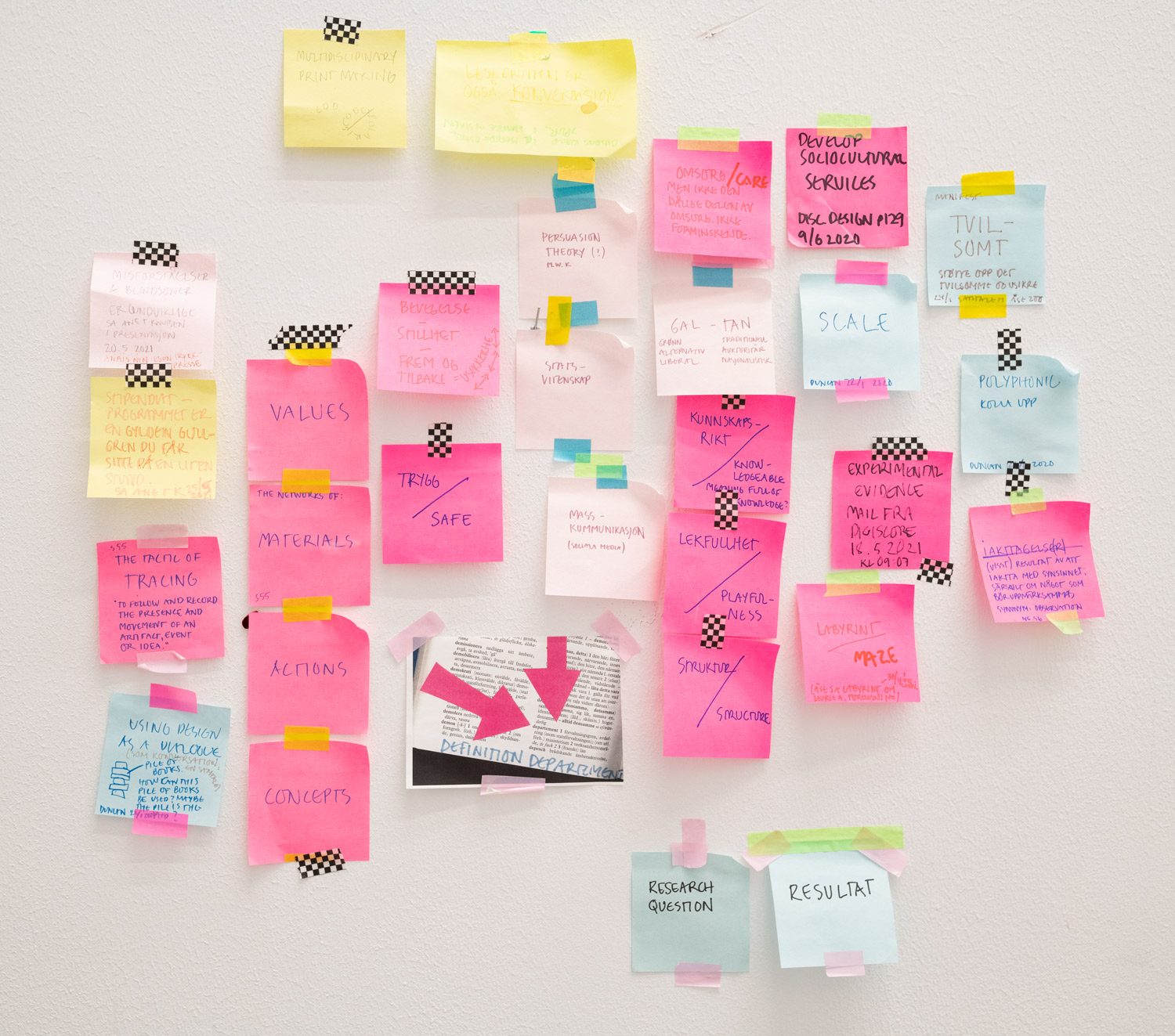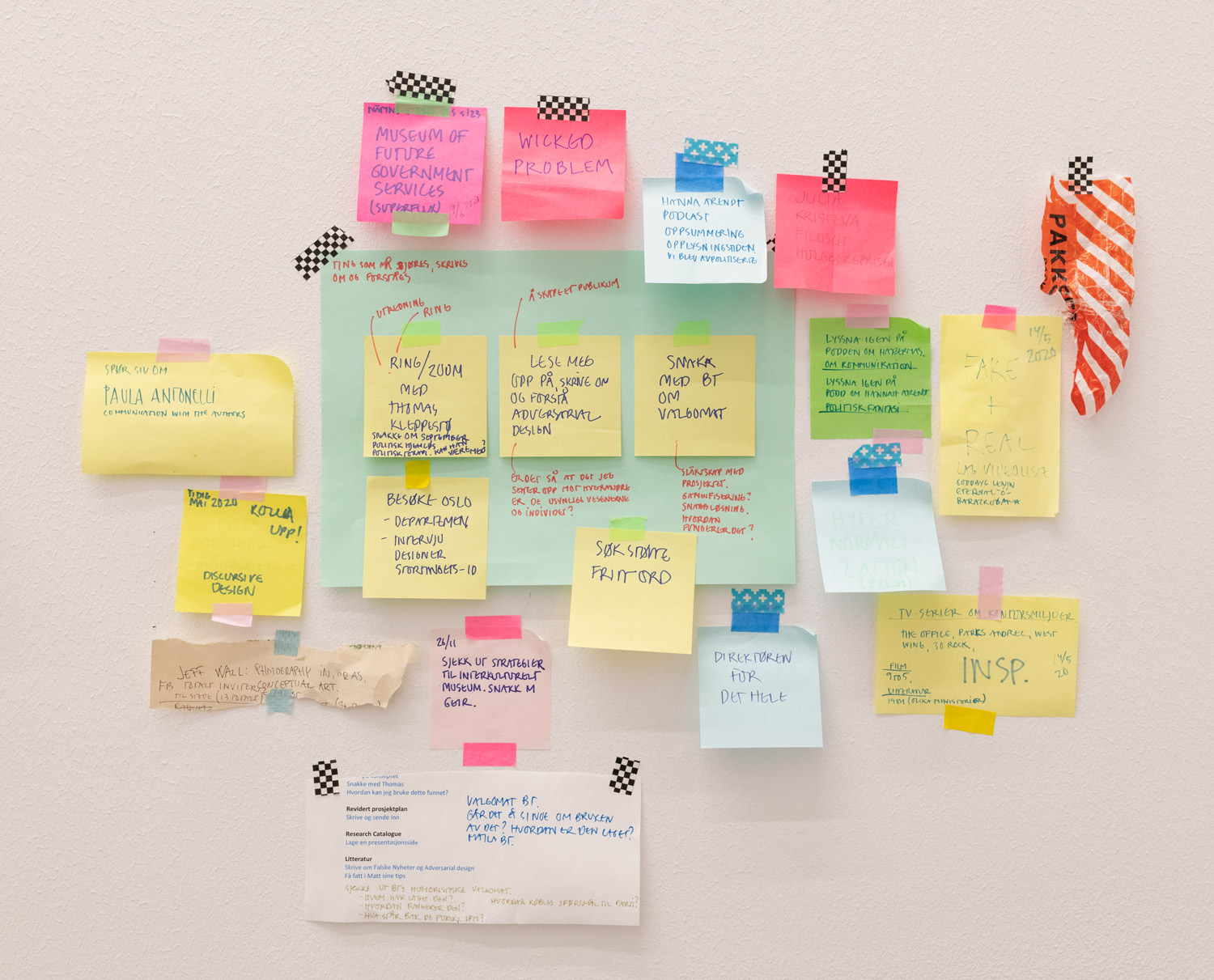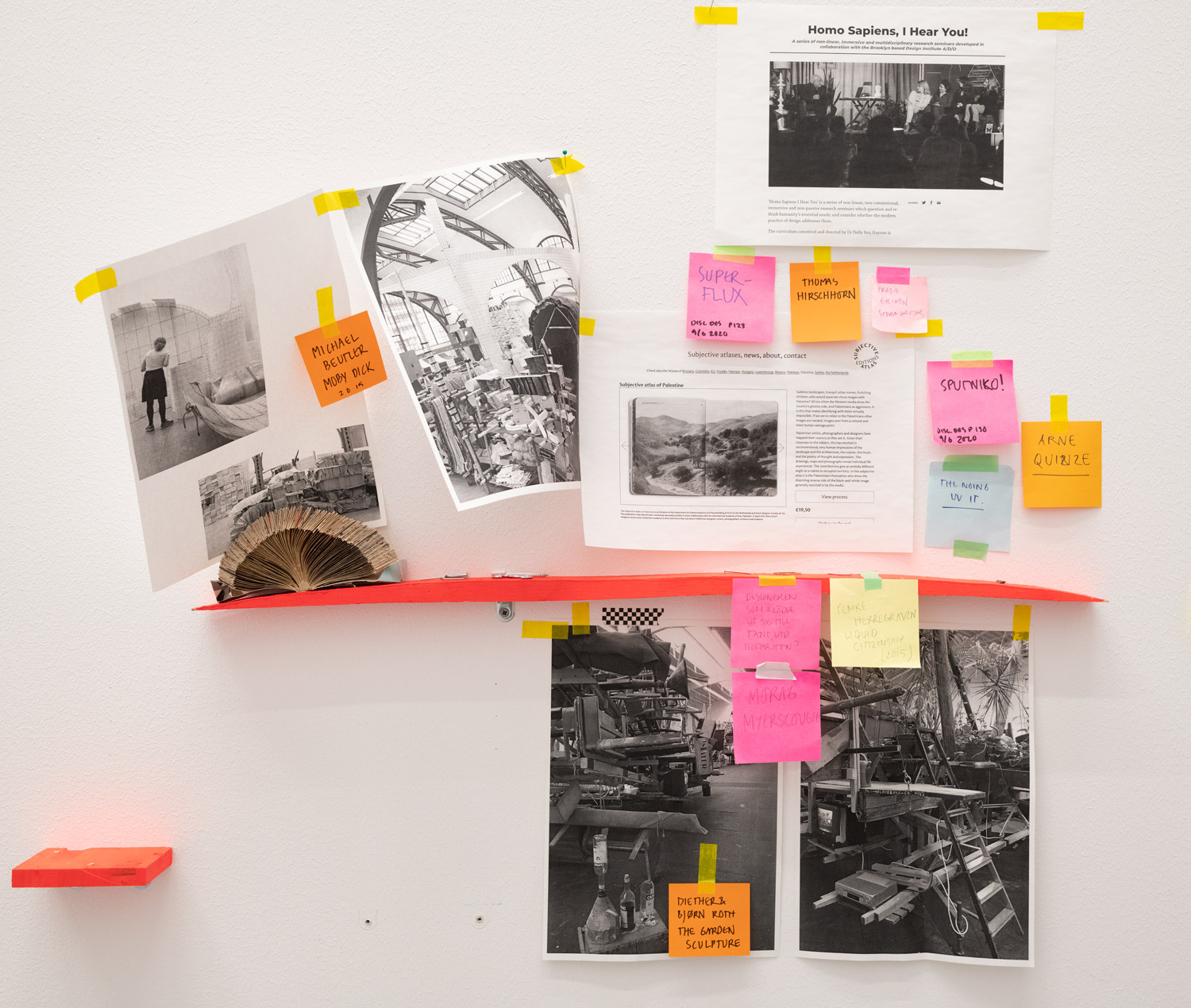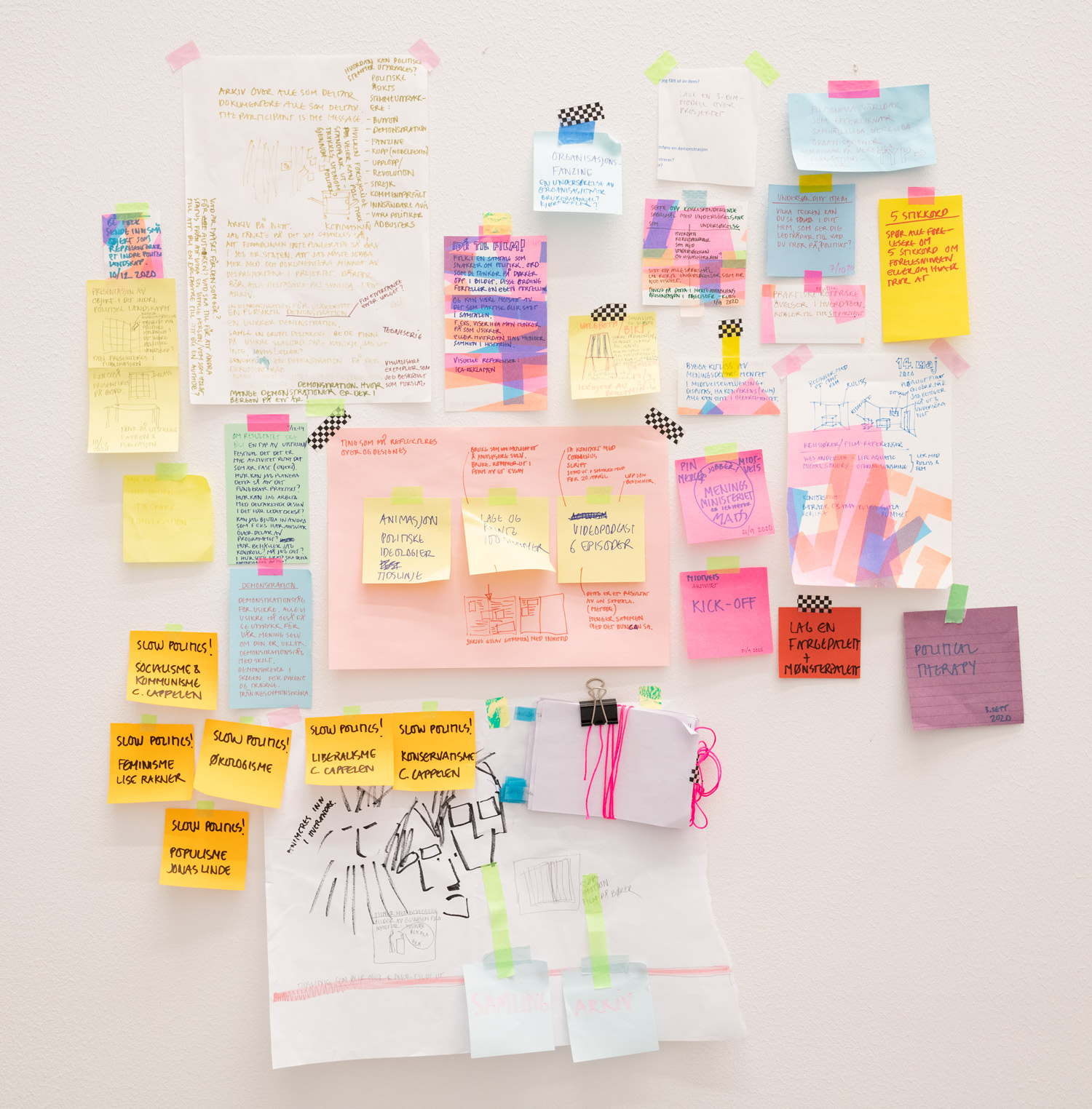I am packing down my studio, now for the second time over three years. I´ve put all my stuff on five pallets, the pallets have been picked up by three movers and transported with a huge truck to the new address, only two minutes away. The new studio has a window, and a view over the churchyard. On a beautiful day the visual imprint is similar to the garden connected to the Vatican Museum.
What is left alone in my old studio is the six-meter-long wall filled with a large part of my thoughts concerning my project. All my notes, pictures, prompts, questions, books, ideas and small objects, things that others have told me to check out and other mixed inspiration. I like it. It helps me organize my thoughts, make new connections. Using a wall for visual thinking isn’t new or specifically inventive at all, I guess it has been used by many over the years. Especially in thrillers, murder mysteries and conspiracy drama on film and TV, and a good example might be the walls in the office of the main character John Nash played by Russell Crowe in the movie A Beautiful Mind (Universal Studios, 2001).
Writing things down, releases space in my brain. Collecting objects helps me understand both visual and tactile qualities of matter that interests me. The many color charts being made over and over again. A pattern printed on an envelope, the Swedish election booths, typographic tests made in tape. The several time schedules where I try to figure out how much time that is left, what to do first, and when to stop doing more research and wrap up what’s already been done. The sloppiness allows the idea(s) to reveal itself, I can see it for a short time, and it disappears again.
Here I am, packing all my thoughts down. I take notes from the wall at random. An idea, a question, a book. Trying to sort all the notes and stuff in a system before putting them in a moving box. Five categories should cover everything. I start with the easiest one – my books – standing loose on tiny shelfs and quite straight forward – design theory, political theory, artist's books and zines, fiction. Sorting the material quickly becomes more difficult. How can words in combination with tape and plastic figures be grouped? Categories based on themes? And where is the limit for these themes? Questions, simple words to explore, inspiration, ideas, things to do and research. And when I find twenty notes about 'alter ego', is it a subcategory of things to explore or of ideas? Are sub-categories really necessary? I thought this sorting would take about two hours. It takes much longer times than that. But the system will be good - questions for themselves and ideas for themselves. Administration and theory. My ideas are the words on the notes, the pictures, the sketches, and objects.
After moving all this content twice, this due to a shift between different studios and houses, all material has been taken down, relocated, processed, collected, and hung up again. Things have been repeated. Some ideas are written down on several pieces of paper and I can identify approximately when it is written based on the color of the note and tape and to what extent the text from the bad quality markers has been bleached by the sun. Some notes are marked with dates, and that off course improves the process. It took me some time to figure that out. Sometimes date matters, sometimes they don’t.
The action of documenting the findings on the wall makes elements in the project appear in new ways and in new formations. Themes, words objects, quotes, and books that, to start with, was chosen completely intuitively can all of a sudden appear as something of great importance.
Using the wall as a tool for visual thinking is a way to remember things, to discover new and more unexpected ideas, see new connections. It makes the studio room into an important actor in the project, makes the content come alive. The shapes and words sometimes spark new associations in me. But for that to appear the stars have to stand in a perfect formation. It is rare, but it does happen. I am working with the design in the studio at the same time as visual impressions and everything else surrounding me influences the process. Many of the ideas for the scenography executed in the workshop The Inner Political Landscape are combinations of materials and shapes first observed in the studio. The striped tables, the timeline, found wooden constructions, tape on tape and Alice in Wonderland. Maybe the whole studio is the idea? All components are here.
